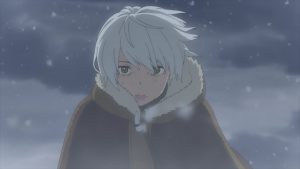 While the premiere of Fumetsu no Anata e was an emotional powerhouse and an instant classic, this was probably closer to what the meat of the series actually is. I’ve seen Fumetsu compared to a lot of different series – Kino no Tabi most frequently – and there’s something to that. But the resemblance is only skin deep, and this show is very much its own animal. The sensibility it brings is odd and difficult to pigeonhole. It can be described with many individual adjectives but none of them capture the essence of what it is. That’s the best I can do for now, but the meaning of that vague description will come clear in good time.
While the premiere of Fumetsu no Anata e was an emotional powerhouse and an instant classic, this was probably closer to what the meat of the series actually is. I’ve seen Fumetsu compared to a lot of different series – Kino no Tabi most frequently – and there’s something to that. But the resemblance is only skin deep, and this show is very much its own animal. The sensibility it brings is odd and difficult to pigeonhole. It can be described with many individual adjectives but none of them capture the essence of what it is. That’s the best I can do for now, but the meaning of that vague description will come clear in good time.
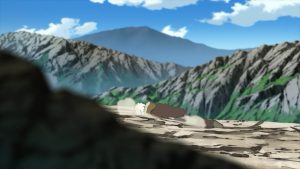 It’s interesting to speculate on just what the nature of the entity at the heart of the series is. It became a wolf, certainly, in what seems to be an act of mimicry. And it was a good enough wolf to fool its human companion. But it didn’t learn enough inside that wolf to become a pre-fab human right out of the box. Joann observed the hell out of the boy, that much was clear (memorably so). But whether because its capacity to learn was limited by the extent of a wolf’s intellect or because those limitations already existed within it, the entity was nowhere near ready to be a human once the boy passed away.
It’s interesting to speculate on just what the nature of the entity at the heart of the series is. It became a wolf, certainly, in what seems to be an act of mimicry. And it was a good enough wolf to fool its human companion. But it didn’t learn enough inside that wolf to become a pre-fab human right out of the box. Joann observed the hell out of the boy, that much was clear (memorably so). But whether because its capacity to learn was limited by the extent of a wolf’s intellect or because those limitations already existed within it, the entity was nowhere near ready to be a human once the boy passed away.
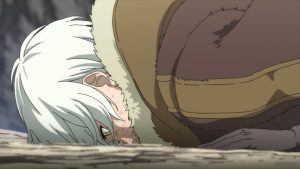 Taking that into account it’s certainly lucky that the entity is immortal. That includes the ability to regenerate, up to and including after being eaten by a bear. But before that the boy died many times over simply as a result of self-neglect and clumsiness, and during this episode he shows no indication of ability to speak. That will come into play later, but after the bear attack the narrative leaves the entity for a while and heads for Ninannah village, home of a strong-willed little girl named March (Hikisaka Rie) and her protective older friend Parona (Uchida Aya).
Taking that into account it’s certainly lucky that the entity is immortal. That includes the ability to regenerate, up to and including after being eaten by a bear. But before that the boy died many times over simply as a result of self-neglect and clumsiness, and during this episode he shows no indication of ability to speak. That will come into play later, but after the bear attack the narrative leaves the entity for a while and heads for Ninannah village, home of a strong-willed little girl named March (Hikisaka Rie) and her protective older friend Parona (Uchida Aya).
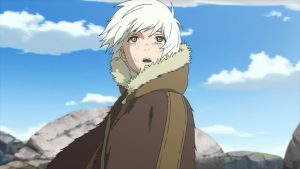 So where is this exactly? While there’s no reason to assume it’s intended to be an actual place, the houses bear the classic Gasshoku (“hands in prayer”) roofs of Japan’s snowiest regions, and elements seem to have been taken from multiple northern peoples like the Ainu and the Inuit. There’s also been nothing apart from the entity itself that was expressly magical, and none of the animals we’ve seen are fantastic beasts either. March is genki to say the least, and determined to grow up and be a mommy as quickly as possible. But all that gets pushed aside when Hayase (Saiga Mitsuki) shows up in town with a holy woman and a couple of thugs.
So where is this exactly? While there’s no reason to assume it’s intended to be an actual place, the houses bear the classic Gasshoku (“hands in prayer”) roofs of Japan’s snowiest regions, and elements seem to have been taken from multiple northern peoples like the Ainu and the Inuit. There’s also been nothing apart from the entity itself that was expressly magical, and none of the animals we’ve seen are fantastic beasts either. March is genki to say the least, and determined to grow up and be a mommy as quickly as possible. But all that gets pushed aside when Hayase (Saiga Mitsuki) shows up in town with a holy woman and a couple of thugs.
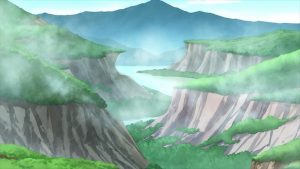 Human sacrifice is an ugly topic, but this is hardly an unrealistic plotline. It’s been around for most of human history, and is still practiced in a few extremely remote places even to this day. The demands are pretty traditional – a virgin girl, of which there are only three in the village. And once the old shaman chooses March, events began to move rather quickly. This is shown as an extremely cruel and traumatic event, and rightly so, but there is an element of cultural bias in the reflexive horror we feel watching this play out. For thousands of years, this sort of thing was just a part of life.
Human sacrifice is an ugly topic, but this is hardly an unrealistic plotline. It’s been around for most of human history, and is still practiced in a few extremely remote places even to this day. The demands are pretty traditional – a virgin girl, of which there are only three in the village. And once the old shaman chooses March, events began to move rather quickly. This is shown as an extremely cruel and traumatic event, and rightly so, but there is an element of cultural bias in the reflexive horror we feel watching this play out. For thousands of years, this sort of thing was just a part of life.
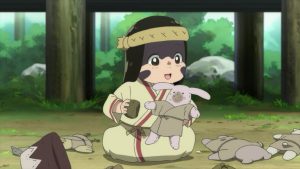 March for me comes dangerously close to moe pandering, and Hikisaka-san’s cutesy performance doesn’t help in this regard. But at least March is decisive and wilful (though even that kinda gets milked) and not a mere passenger in her own journey. Of course she’s going to meet up with the boy, and it happens when Parona attacks March’s procession on the way to the mountain where she’ll be sacrificed. The problem here of course is that if March can’t be procured, Hayase will just take one or both of the other girls – who happen to be March’s best friend and baby sister.
March for me comes dangerously close to moe pandering, and Hikisaka-san’s cutesy performance doesn’t help in this regard. But at least March is decisive and wilful (though even that kinda gets milked) and not a mere passenger in her own journey. Of course she’s going to meet up with the boy, and it happens when Parona attacks March’s procession on the way to the mountain where she’ll be sacrificed. The problem here of course is that if March can’t be procured, Hayase will just take one or both of the other girls – who happen to be March’s best friend and baby sister.
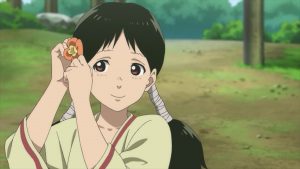 The boy revives after his dinner date with Smokey at just the right moment to scare off Hayase’s muscle, but he’s an abject failure of a human being at this point. Fortunately this plays into March’s intense fascination with being a mom, and while communication is non-existent at best, March instinctively realizes her best bet is to stay close to someone stronger, and the boy (eventually) realizes that March will feed him (important as he’s still not capable of procuring food himself). There’s some real charm to their scenes together, and while this episode is not close to the masterpiece the premiere was, it has a different job to do and it does it well. It has to set up the story and that, after all, is just getting started…
The boy revives after his dinner date with Smokey at just the right moment to scare off Hayase’s muscle, but he’s an abject failure of a human being at this point. Fortunately this plays into March’s intense fascination with being a mom, and while communication is non-existent at best, March instinctively realizes her best bet is to stay close to someone stronger, and the boy (eventually) realizes that March will feed him (important as he’s still not capable of procuring food himself). There’s some real charm to their scenes together, and while this episode is not close to the masterpiece the premiere was, it has a different job to do and it does it well. It has to set up the story and that, after all, is just getting started…
ED: “Mediator” by Masashi Hamauzu



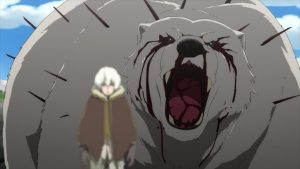
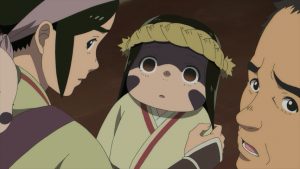
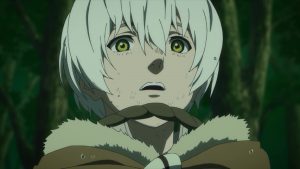
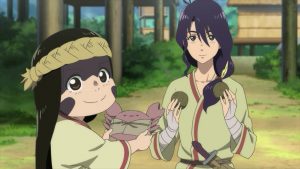
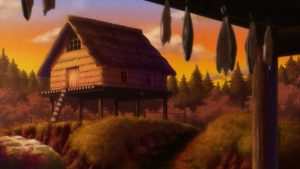
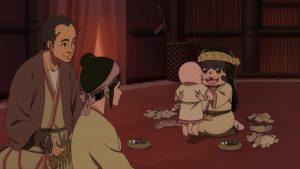
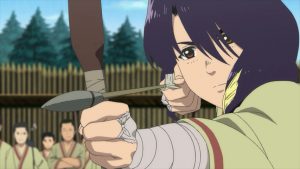
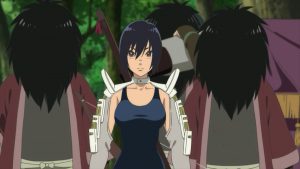
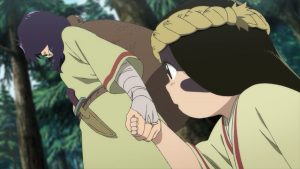

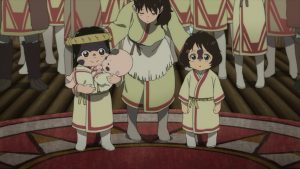
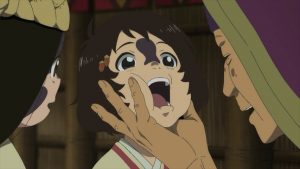
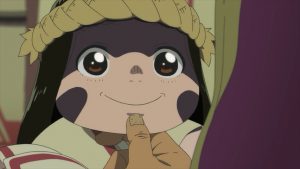
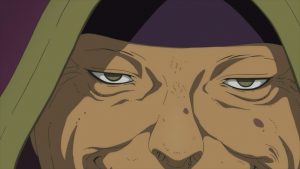
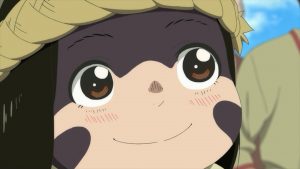
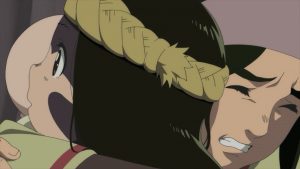

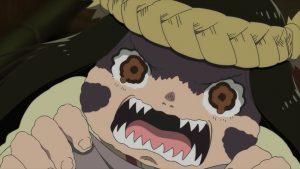
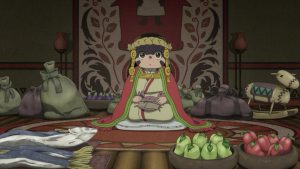
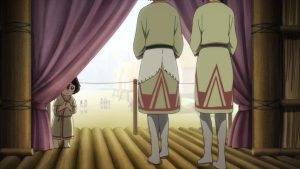
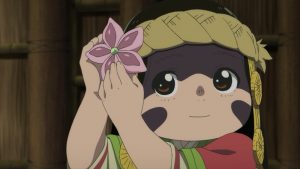
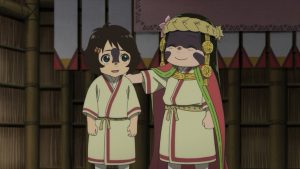
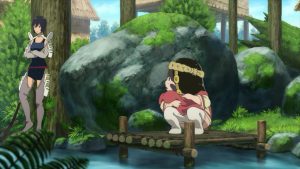
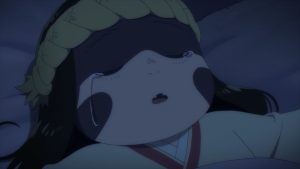
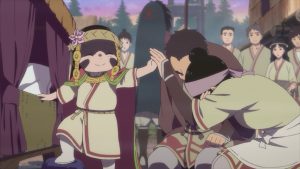
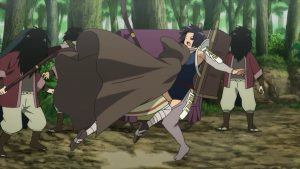
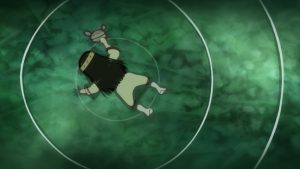
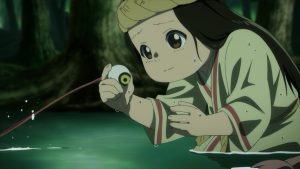

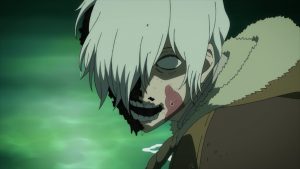

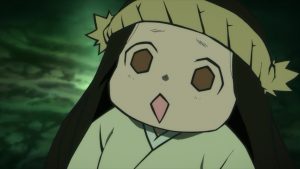
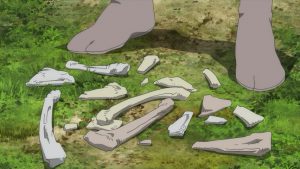
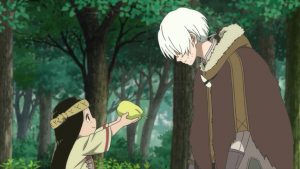
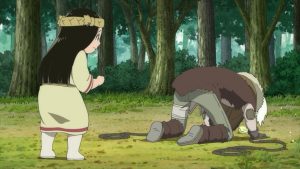
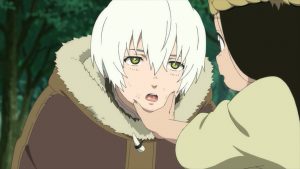

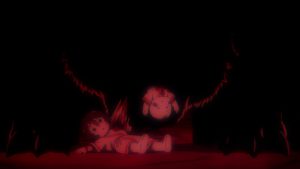
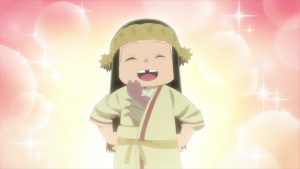
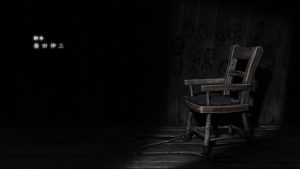




Ivan
April 20, 2021 at 8:46 pmGreat writeup again! Enjoyed this episode more than the last one. It reminded me of Dororo a lot 🙂
Derrick
April 21, 2021 at 9:58 amon a side note, this might invoke a lil bit buddhist element of empty self / no self .
we are all the orb that has taken the body as self.
Guardian Enzo
April 21, 2021 at 10:04 amThat’s definitely one plausible interpretation, yes. With a side of Shinto animism thrown in (which isn’t far off from what Japanese Buddhism actually is).
nixx
April 22, 2021 at 2:48 pmHayase’s outfit may be the most ridiculous one that I’ve ever seen.
Lost Link
April 24, 2021 at 11:56 amDamn, I’m really enjoying this series so far. It’s very intriguing.